Special Report
25 Ways ‘Sesame Street’ Has Changed in Its 50 Years on TV
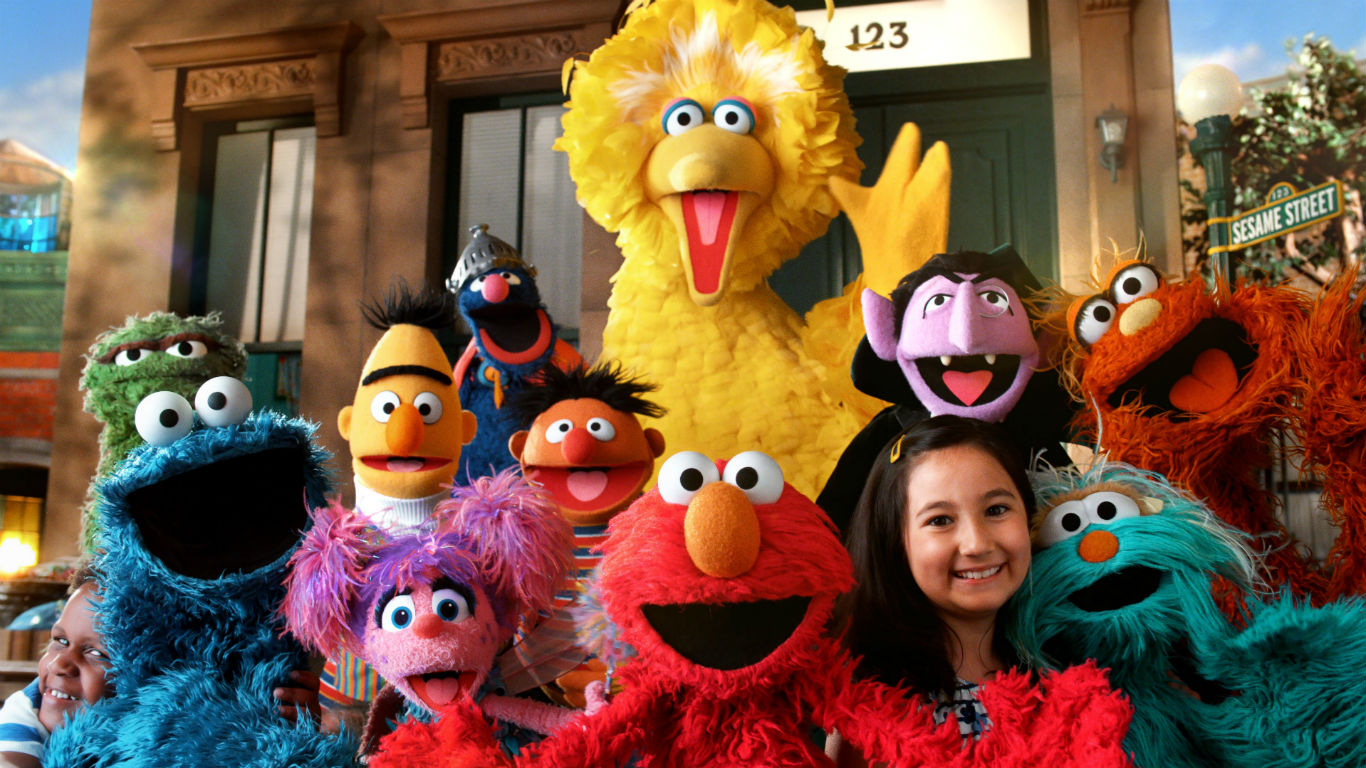
Published:
Last Updated:

S stands for Sesame Street, and it has since 1969 when the beloved show made its debut on public television. This year marks the 50th anniversary of friendly neighbors and fuzzy creatures who help kids, as well as their parents, learn powerful lessons about life.
One reason why the show has remained popular for half a century is its ability to adapt to changing times. 24/7 Tempo reviewed 25 ways the groundbreaking series, which has had more than 150 million viewers and won 193 Emmy awards, has changed over the years while staying true to its original mission of educating children.
And sometimes that means addressing serious issues. Sesame Workshop, the organization behind the show, recently launched an initiative supporting children in foster families by showing how children deal with difficult transitions in their lives. But this is not the first or only example of the Muppets being deployed to combat problems.
Aside from content, what has made “Sesame Street” such a global success is its Muppets. Many were introduced on the show half a century ago are still stars on the show today. Over the years, some characters were added to reflect changing times as well as to identify with an increasingly more diverse audience — these are the most popular characters in the show’s history.
Click here to see 25 ways ‘Sesame Street’ has changed in its 50 Years on TV.

1. The show was banned in Mississippi
Even though in 1970 “Sesame Street” was already widely referred to as the best preschool educational program on TV, Mississippi’s State Commission for Education Television banned it from the state’s PBS member station. (Jim Henson, the creator of the Muppets, was from Mississippi.)The reason? As an article in The New York Times at the time quoted a member of the commission: “[the show] uses a highly integrated cast of children.” The ban was lifted after a month.
[in-text-ad]
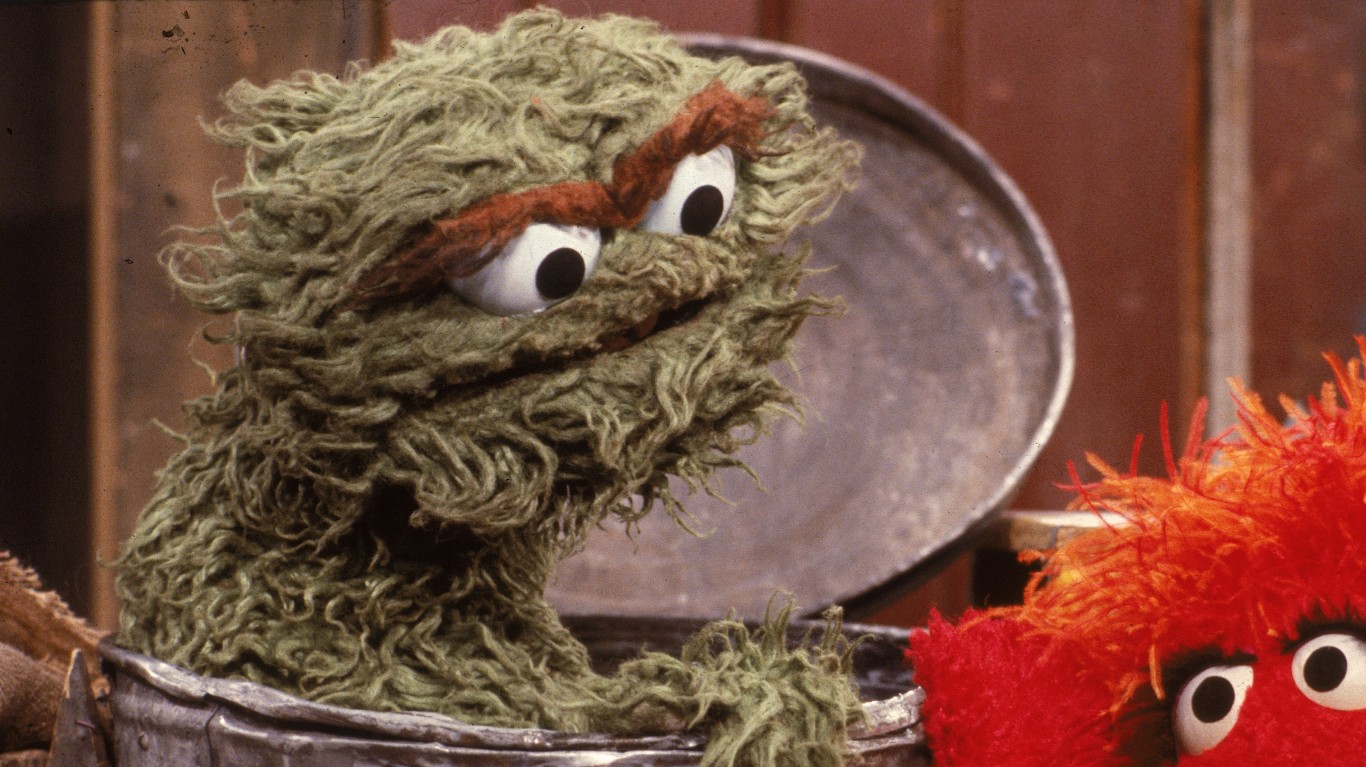
2. Oscar the Grouch looks very different
The furry green Muppet has always been grouchy but he looked different in 1969 when “Sesame Street” premiered. He had no arms or legs and his fur was orange. The show’s producers made the color change because the cameras back then were not advanced enough to capture orange correctly. In the show, the Grouch, whose character was inspired by a cranky taxi driver from New York, attributed the change to a vacation at Swamp Mushy Muddy. He blamed the dampness for causing him to be covered with slime and mold, turning him permanently green.

3. Viewers have to pay to watch it
Or they have to wait a few months to watch it for free on PBS. The popular show will move to HBO Max, a subscription video on demand platform in 2020. “Sesame Street’s” 51st season will air there but, according to the deal that was signed in 2015, the new episodes are available on PBS nine months later.

4. Episodes are shorter
Every episode of “Sesame Street” was an hour long until 2015. After getting positive station and viewer feedback, the show’s producers decided to change the format to 30 minutes focusing on a single topic as this would keep kids engaged through the entire episode. Also, shorter episodes are cheaper to produce.
[in-text-ad-2]

5. Fewer celebrity cameos
Hundreds of celebrities — from actors to athletes and politicians — have appeared on “Sesame Street” over its 50 years on TV. One of the more memorable performances was that of Robin Williams teaching the Two-Headed Monster what the word “conflict” means. Celebrity cameos, however, were cut back when the show’s episodes were reduced to half an hour.
6. Fewer satires of other shows
“Sesame Street” used to be very popular among parents. Many have complained, however, that more recent episodes have become too hyperactive and don’t focus on numbers, letters, and real life experiences as much. As fewer adults watch it today, the show has pared its pop culture parodies, such as “Birdwalk Empire.”
[in-text-ad]
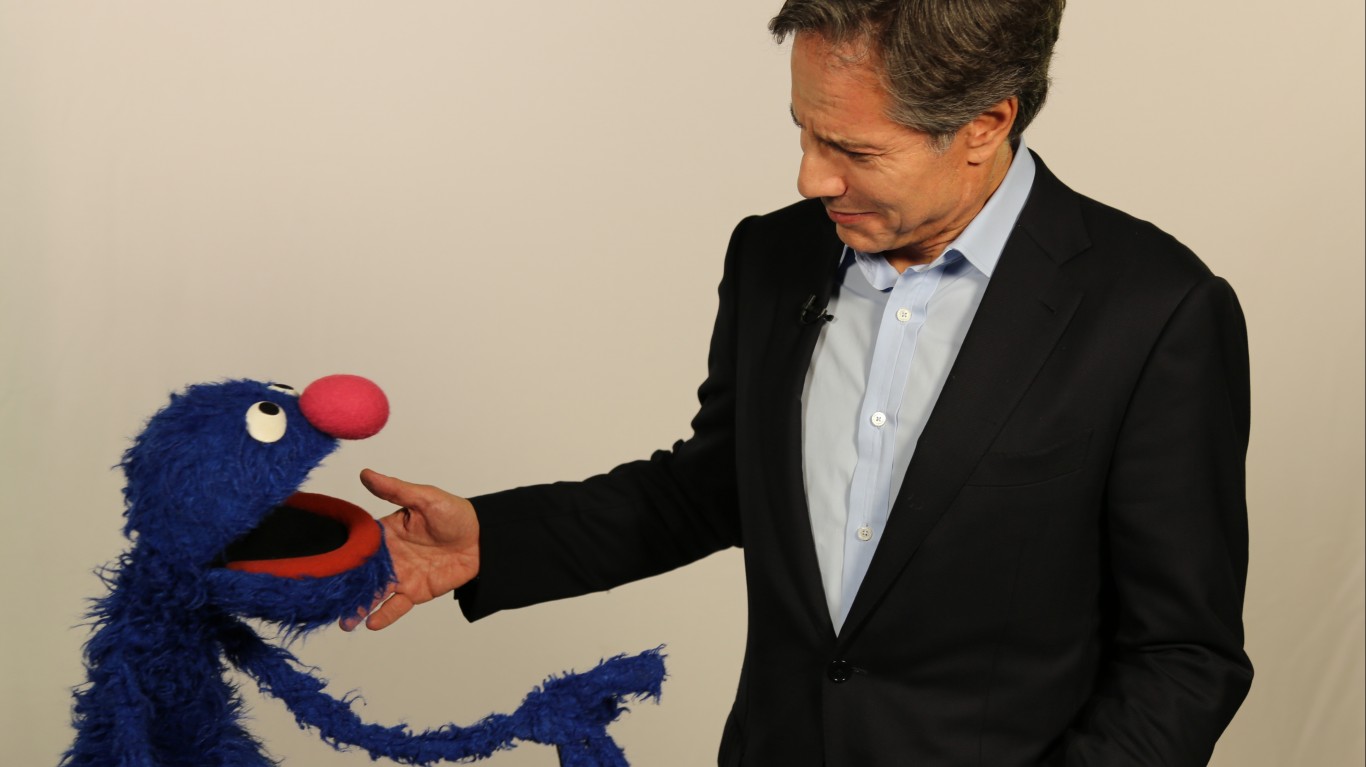
7. Few special segments
Cutting episodes in half required some serious content decisions — something had to give. Spanish language segments, the Super Grover segments, skits about Grover’s alter ego were missing. Abby’s Flying Fairy School segments was also missing.
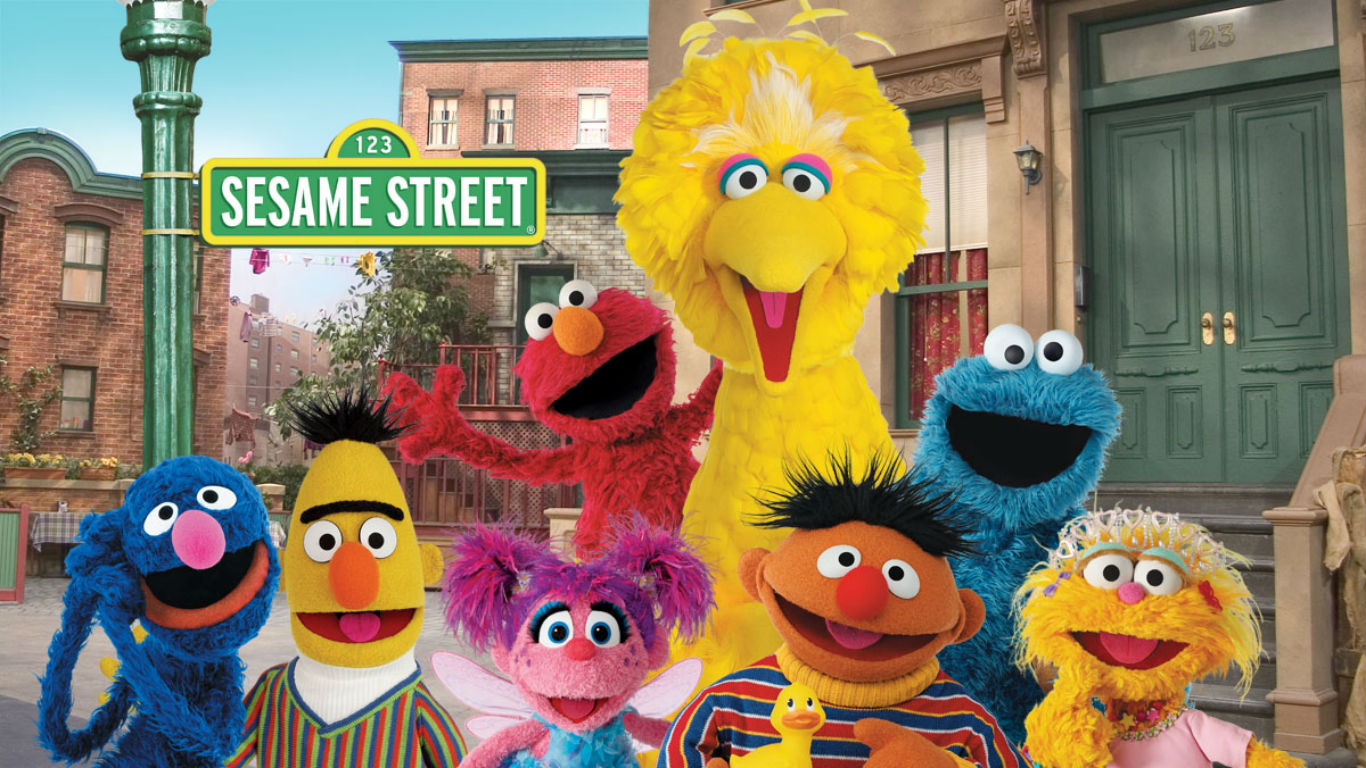
8. Only three characters are in every episode
According to the series’ executive producer, the show’s hour-long episodes were too long for modern children. It was hard for them to stay focused for so long and to keep up with so many characters in one episode. So a decision was made to have only Cookie Monster, Elmo, and Abby in every outing while Grover, Big Bird, Rosita, and Oscar the Grouch make frequent appearances — but not in every episode.
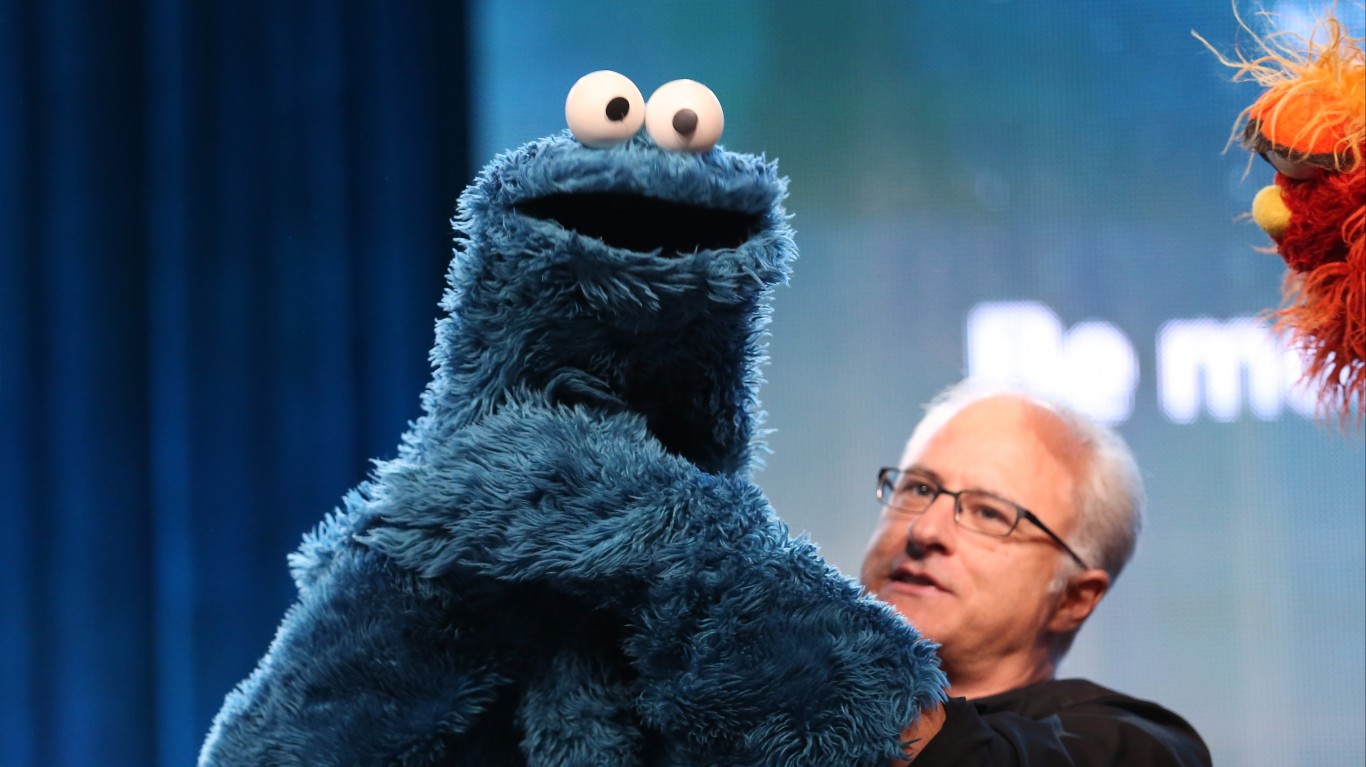
9. Cookie Monster has his own “show”
Cookie Monster is so popular he got his own separate cooking show called “Cookie Monster Foodie Truck.” In each episode, he and his friend Gonger get a meal order from a child. The segment is about finding and discussing the ingredients, and thus teaching kids about healthy eating habits, as well as where food comes from. Over the years, Cookie Monster’s appetite for cookies has been toned down as a way to address the childhood obesity epidemic in the country.
[in-text-ad-2]

10. First Latina role in TV history
Sonia Manzano was cast as Maria, the first Latina leading role in television history. Manzano played the character from 1971 until 2015 when she retired. Maria was known as the Muppet who often mediated debates and gave advice to Big Bird and Elmo.

11. One of the first children with Down syndrome on TV
One of “Sesame Street” writers, Emily Kingsley, had a son with Down syndrome. Since four decades ago the condition was not as well understood, she suggested that her son, Jason, be on the show. He appeared in more than 50 episodes and was one of the first people with Down syndrome to appear on TV — ever. He is credited with playing an important part in changing people’s perceptions of Down syndrome.
[in-text-ad]
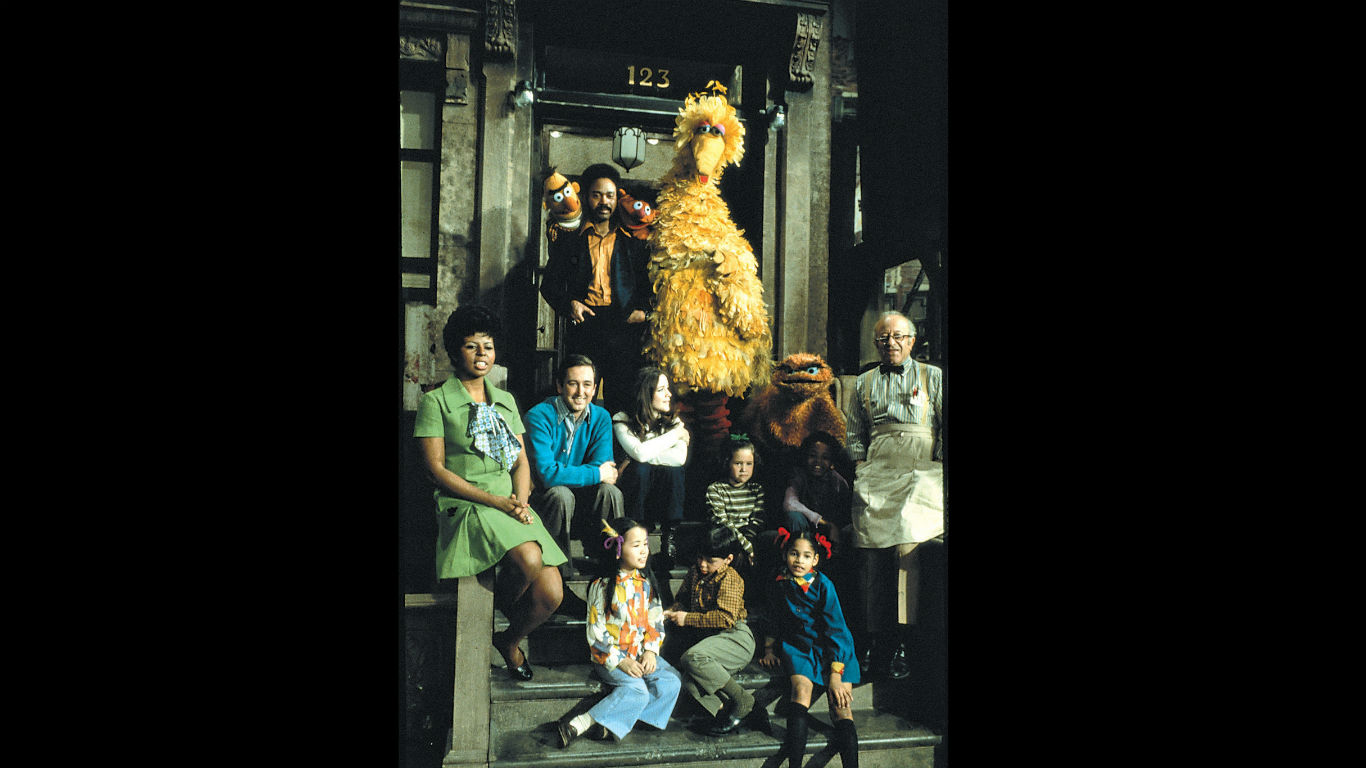
12. It is aired in over 150 countries
“Sesame Street” is a show with fun characters who teach the alphabet and counting, as well as valuable lessons about healthy habits, empathy, and friendship. So it’s no surprise that the series has gone global — over the years, more than 150 countries have adapted the show.

13. Visits to the White House
Sesame Street has visited the White House many times over the last 50 years, sometimes multiple times a year. In the past multiple Muppets have showed up at events. This was not the case in 2017 when the puppets were invited to the annual Easter Egg Roll. Only one costumed character appeared. This may be due to the fact that the Trump administration had proposed a few days earlier to end all funding for the show.
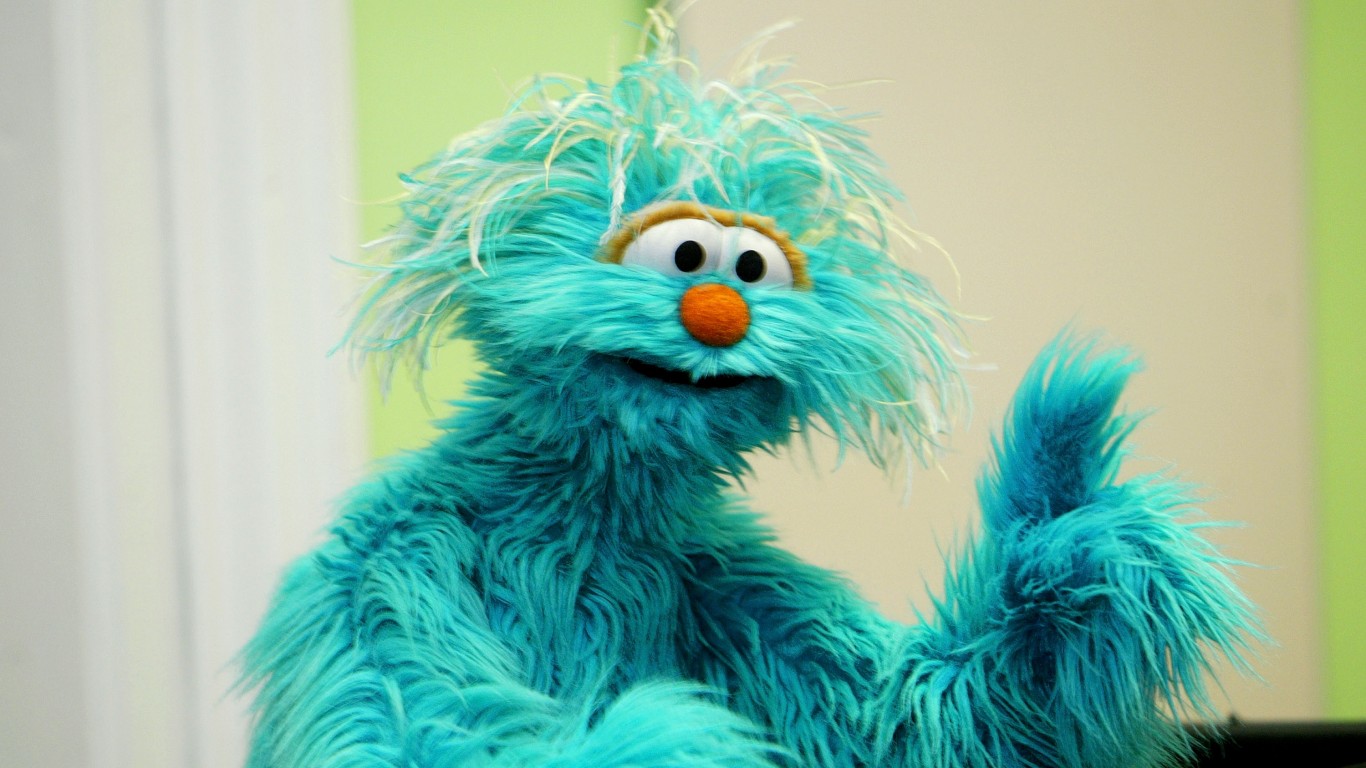
14. Bilingual puppets are introduced
The first bilingual character on the show was a grouch — Osvaldo or Oswald. His character made its debut in the series’ 11th season. The second, and possibly more popular, bilingual character is Rosita, played by Carmen Osbahr. Her debut was in 1991, 12 years after Osvaldo. She speaks both English and Spanish. She has a segment called the Spanish Word of the Day. A third Spanish-speaking character — Armando, who was a writer — was introduced in 2013.
[in-text-ad-2]

15. Specific content for online viewing
TV is not the only place the world’s longest street’s residents can be seen. Sesame Street publishes new video on YouTube every week. The videos are centered around one theme and are usually between three and five minutes long.

16. It helps children with school
A 2019 study by professors at Wellesley College has found that Sesame Street has prepared children in pre-K do better once they start going to school. The biggest improvements were noted among black, non-Hispanic boys and children who live in poorer neighborhoods.
[in-text-ad]
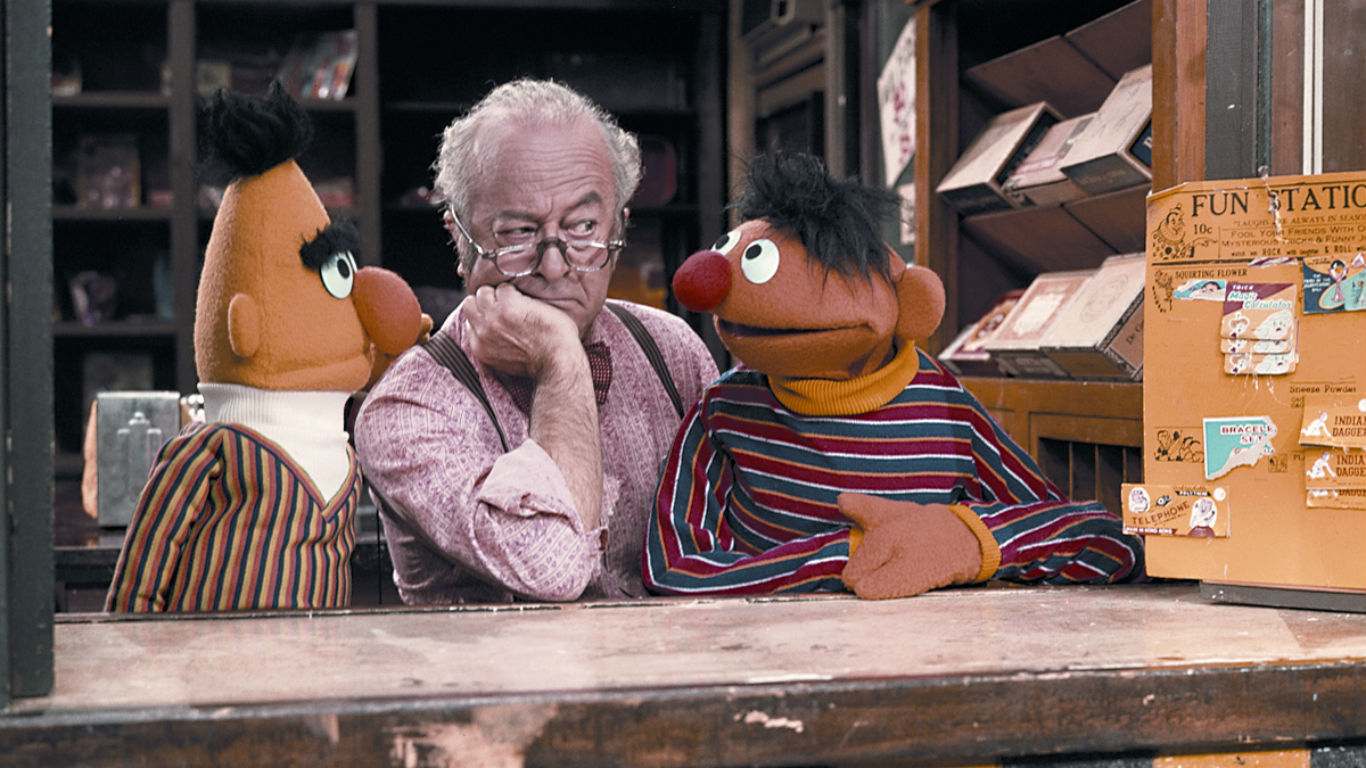
17. Its audience may be changing
Some people and long-time fans have taken an issue with Sesame Street’s move to HBO. They say the deal had “degraded” the original mission of the show, which is to help and educate all kids, everywhere. But now, since HBO is not free, children from low-income families are not likely to have access to it and will have to wait nine months to see the episodes on PBS for free.

18. Funding changes
As a show that aired only on free public television between 1969 and 2015, Sesame Street has been relying on donations and some federal funding. Fifteen percent of PBS’ total revenue comes from the Corporation for Public Broadcasting (CPB), a private, nonprofit corporation created by Congress in 1967. Sesame Street received about $3.6 million a year. The show’s annual operating cost, however, is about $120 million. It’s no surprise then that by the time HBO bought the series, the show was in tremendous debt. How much HBO is paying for the license to air Sesame Street is unknown.
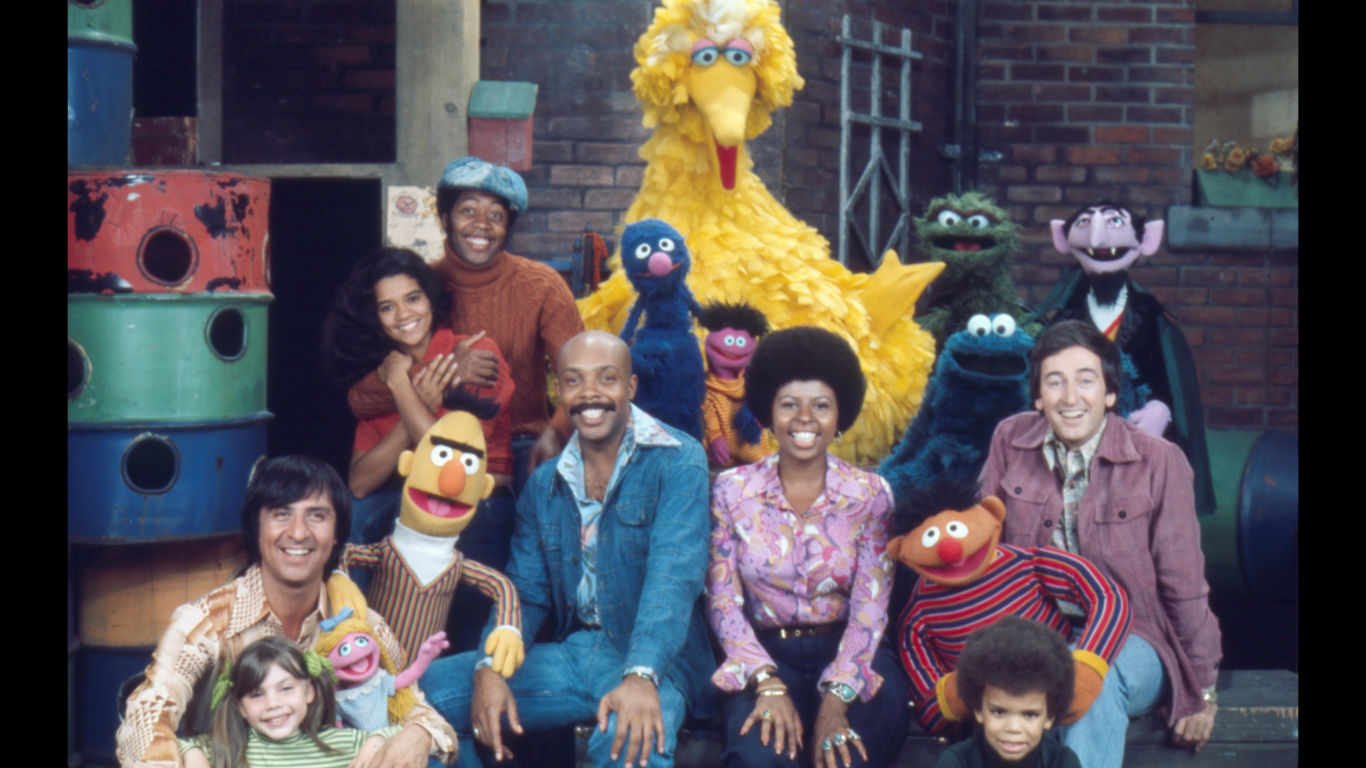
19. Cookie Monster no longer loves cookies so much
As his name may suggest, Cookie Monster, one of the most beloved Sesame Street Muppets, loves cookies. When he doesn’t have a treat, especially chocolate chip cookies, he is looking to get one. Cookie Monster’s appetite for cookies has been toned down over the last decade as a way to address the childhood obesity epidemic in the country.
[in-text-ad-2]

20. A Muppet with autism
Sesame Street introduced Julia in 2017, its first Muppet in a decade. She is a 4-year-old girl with autism, who likes to paint. The show was praised for creating a character that will help children understand the disorder, which is characterized by challenges with social skills and communication, and to not isolate people who have it. To help do that, Julia is portrayed as a normal child who has friends and loves to play.
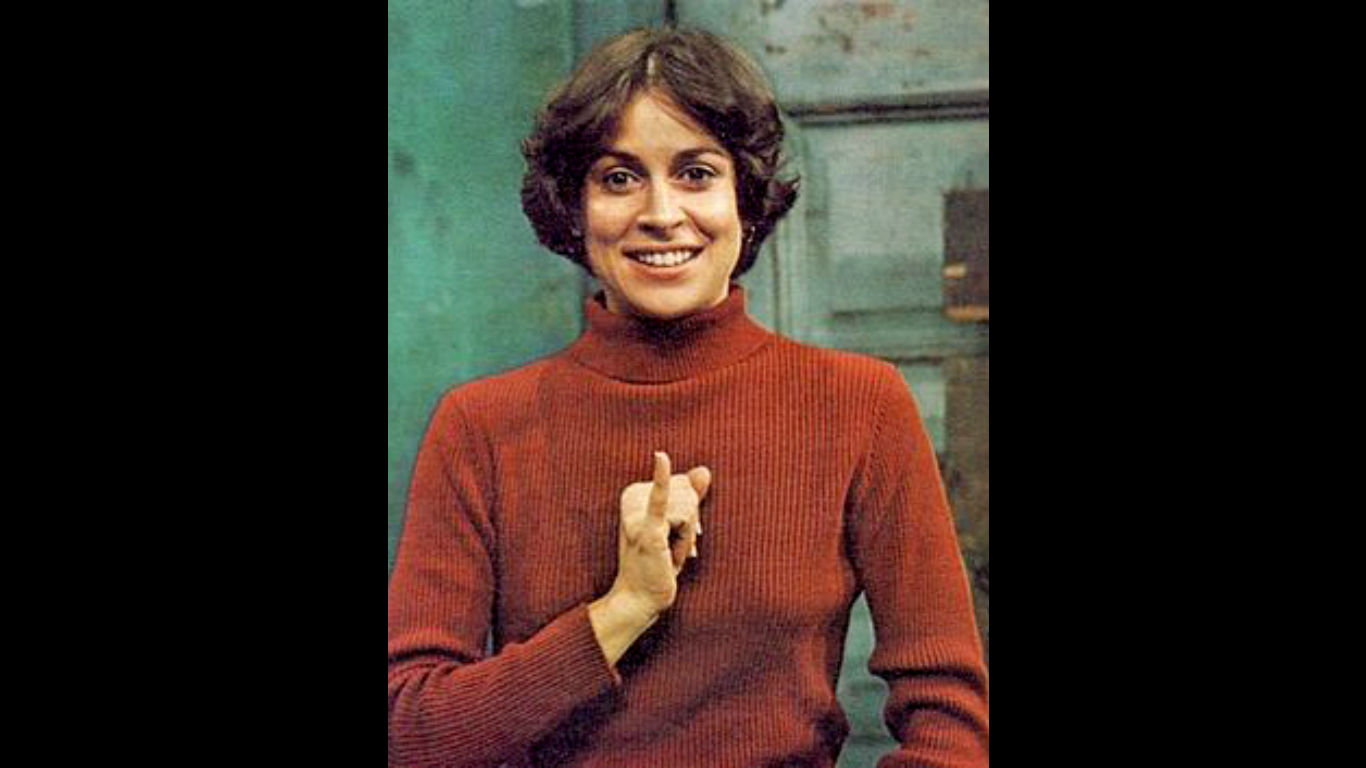
21. Sign language is introduced
In 1972, Sesame Street introduced Linda the Librarian. Both the character and the actress who played her are deaf. She taught viewers about sign language and raised awareness about issues that deaf people face on a daily basis. Linda was part of the show for 30 years. A book about sign language featuring her and Sesame Street characters can still be found for sale.
[in-text-ad]

22. A character with a genetic disorder is introduced
Sesame Street introduced a character with osteogenesis imperfecta, a genetic disorder affecting the bones, in 1993. The 9-year-old Tarah appeared on the show until 2001. She needed a wheelchair to move around but that never stopped or slowed her down. She even performed in a wheelchair ballet.
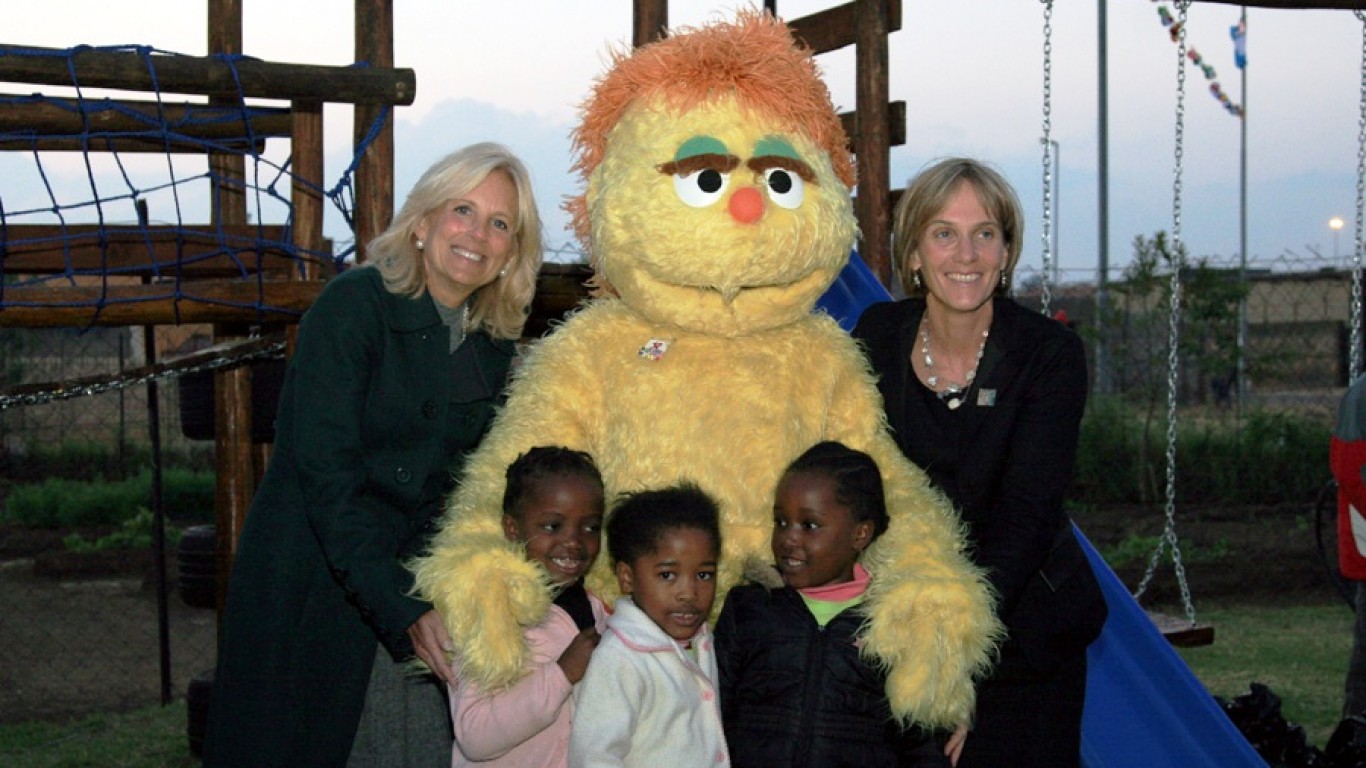
23. The first HIV-positive Muppet
Despite advances in treatment and increased awareness about how to prevent it, South Africa is still the country with the biggest HIV epidemic. More than 7 million people are living with the condition. In 2002, the South African Sesame Street introduced Kami, a 5-year-old HIV-positive Muppet, as a way to deal with the ignorance, prejudice, and fear surrounding the illness. The name Kami is short for “kamogelo, which means acceptance. She still appears in episodes to help reduce stigma surrounding AIDS in the region.

24. An Arab-Israeli Muppet
Sesame Street was not afraid to address the decades-long conflict between Palestinians and Israelis. The Israeli version of the show, Rechov Sumsum, introduced in 2006 the first Arab-Israeli Muppet called Mahboub. He spoke both Arabic and Hebrew. He has also made appearances in the American co-production of the series. His role would often be to be the intermediary between kids and the Muppets, showing that people can be friends despite their differences.
[in-text-ad-2]
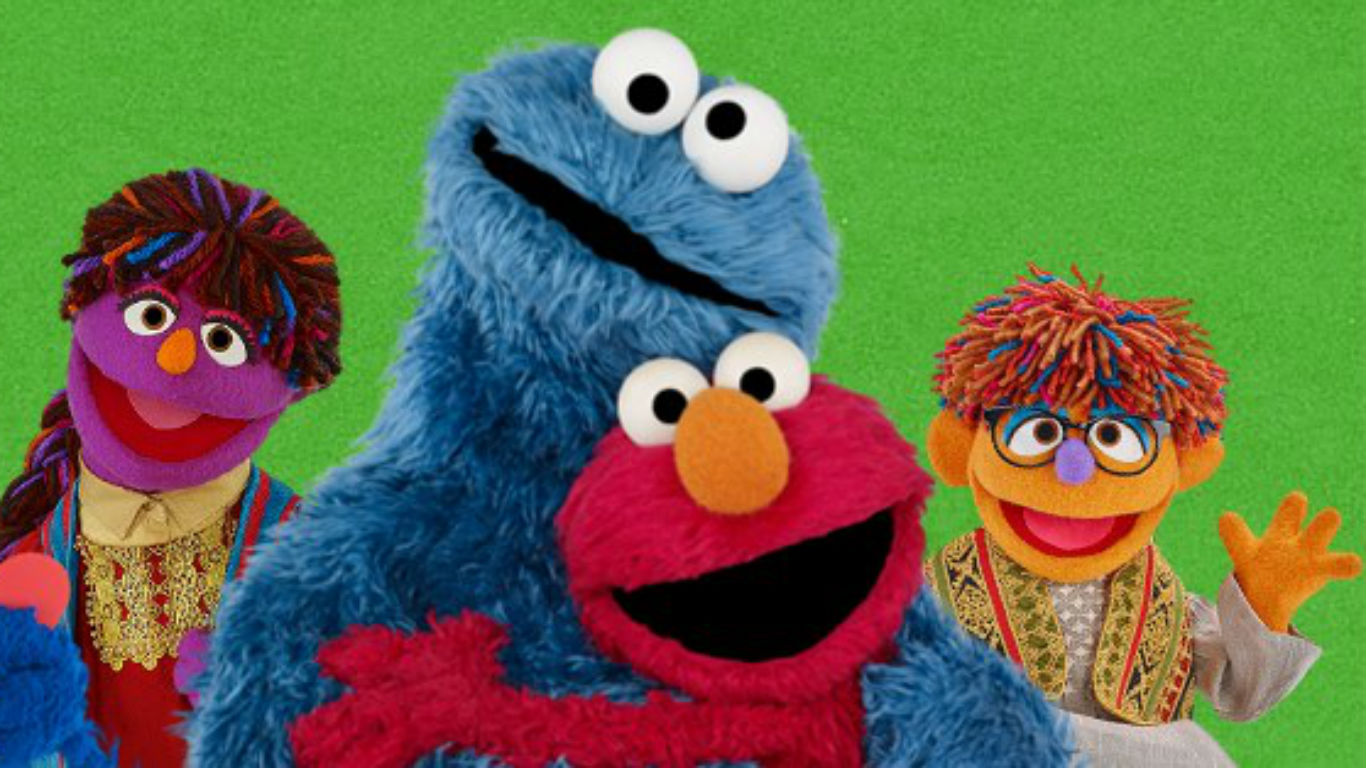
25. Sesame Street tackles women’s rights in Afghanistan
Sesame Street’s co-production in the war-torn country has been airing since 2011. The first Afghan Muppet, Zari, was introduced five years later, addressing the issue of women’s rights. Zari loves to go to school and play cricket. Her role is to be a positive role model for girls in the country, by showing everyone that it’s OK for girls to be educated as well as play sports and pursue a career.
Thank you for reading! Have some feedback for us?
Contact the 24/7 Wall St. editorial team.